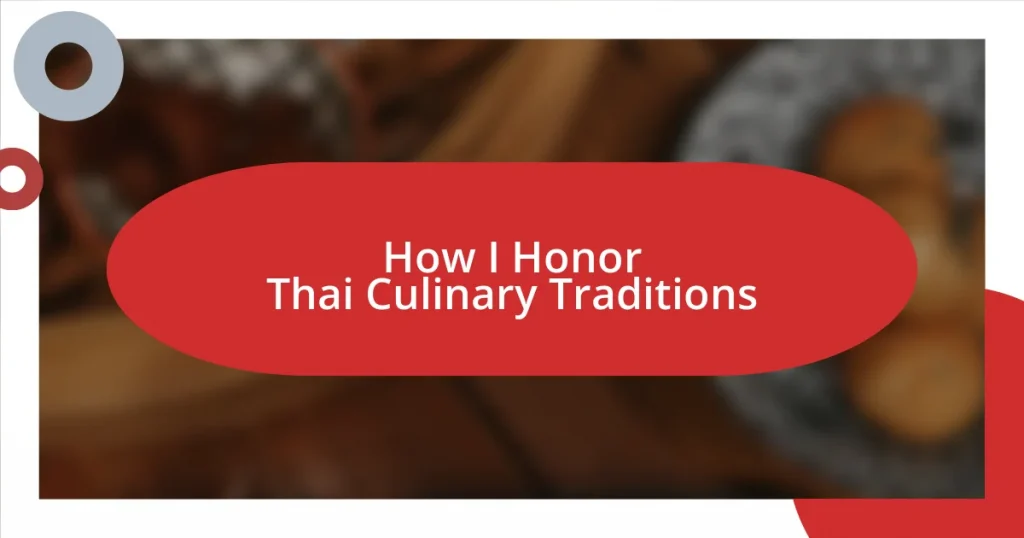Key takeaways:
- Thai cuisine blends vibrant flavors and local ingredients, deeply reflecting the culture and traditions of Thai communities.
- Key cooking techniques, such as pounding ingredients, stir-frying, and balancing flavors, are essential for creating authentic Thai dishes.
- Food plays a central role in Thai festivals, fostering community connections and honoring cultural rituals through shared meals and traditional dishes.
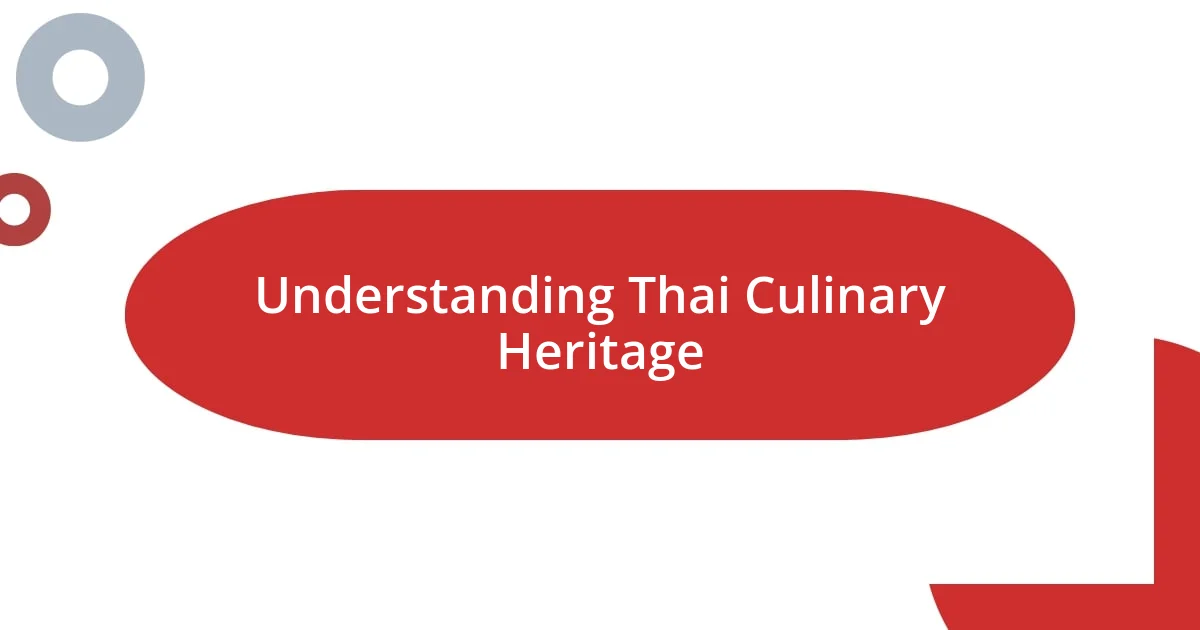
Understanding Thai Culinary Heritage
Thai culinary heritage is a vibrant tapestry of flavors and traditions, woven together by the stories of local communities and their agrarian roots. I remember my first visit to a bustling Thai market, where the air was thick with the scent of fresh herbs and spices; it felt like stepping into a living museum of culinary art. Have you ever experienced the thrill of choosing ingredients as locals do, hands reaching for vibrant chilies and fragrant basil, all while chatting with friendly vendors about their prized recipes?
The interplay between food and culture in Thailand is fascinating. Each dish tells a story—like the way the sourness of tom yum reflects the balance of Thai life. When I savored this iconic soup for the first time, I was struck by the perfect blend of flavors that danced on my palate, bringing memories of family gatherings to life. Isn’t it incredible how food can evoke such deep emotions and connections?
Moreover, the emphasis on fresh, local ingredients speaks volumes about the Thai relationship with nature. The first time I tried to replicate a green curry at home, I realized just how profoundly the freshness of each component mattered. It left me wondering: how can we truly honor these traditions if we overlook the importance of sourcing quality ingredients? Connecting with local farmers and producers here truly transformed my understanding of Thai cuisine, as it embodies not just sustenance but the heart of a culture.
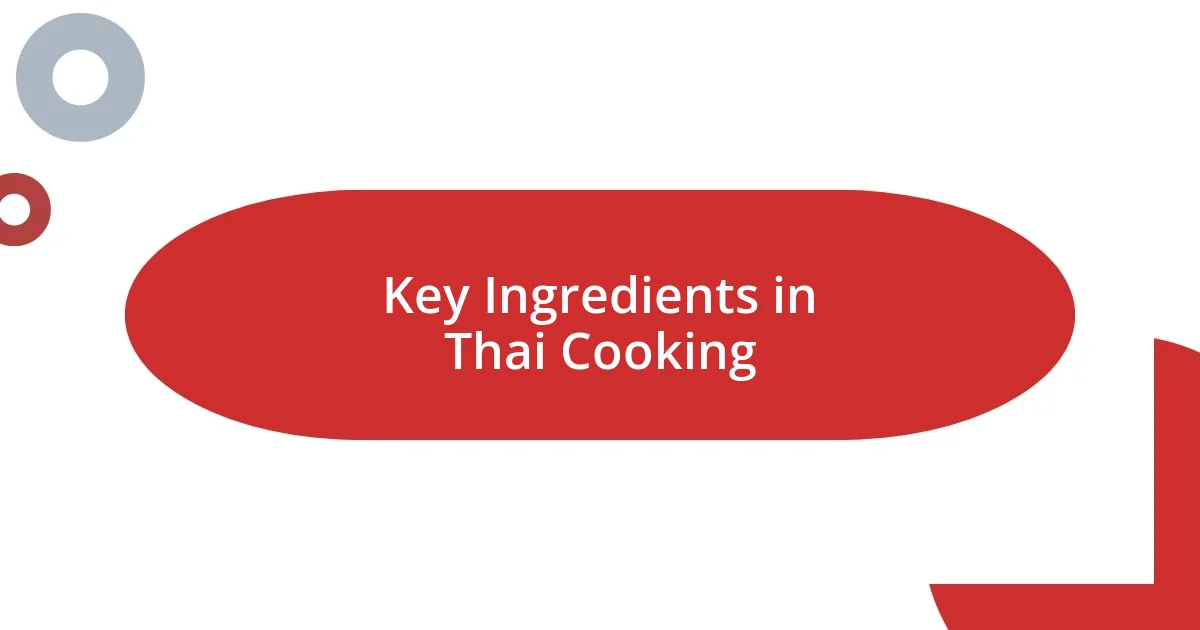
Key Ingredients in Thai Cooking
The cornerstone of Thai cooking lies in its vibrant ingredients, each one playing a crucial role in creating the dishes we adore. Fresh herbs like cilantro and mint infuse dishes with a refreshing quality. I still remember the first time I stumbled upon a vibrant bunch of kaffir lime leaves at a local grocery store. The aroma was unlike anything else, and it was a game changer for my homemade Thai curry. Have you ever tried using fresh herbs versus dried? The difference truly brought me a new level of appreciation for the cuisine.
Chilies are another essential component, ranging from the fiery bird’s eye to the milder long green chili. I recall a cooking class where we had to taste various chilies, and I was amazed by the complexity they brought to the dishes. It’s not just about the heat; it’s about the flavor profile that each chili variety brings. Have you ever noticed how some chilies can add a subtle smokiness that transforms a meal? This diverse palette of heat is what makes Thai food genuinely dynamic.
I also find that fish sauce is indispensable in achieving that umami depth in Thai dishes, blending salty and savory flavors in perfect harmony. My first encounter with fish sauce at a street food stall was enlightening; the vendor generously poured it over a plate of som tum (papaya salad), and the experience was transformative. The way it enhanced the flavors was an eye-opener for me. It’s fascinating how a simple ingredient can elevate a dish to new heights, isn’t it?
| Ingredient | Flavor Profile |
|---|---|
| Fresh Herbs (e.g., cilantro, mint) | Refreshing and aromatic |
| Chilies (e.g., bird’s eye, long green) | Varied heat and flavor |
| Fish Sauce | Salty and umami-rich |
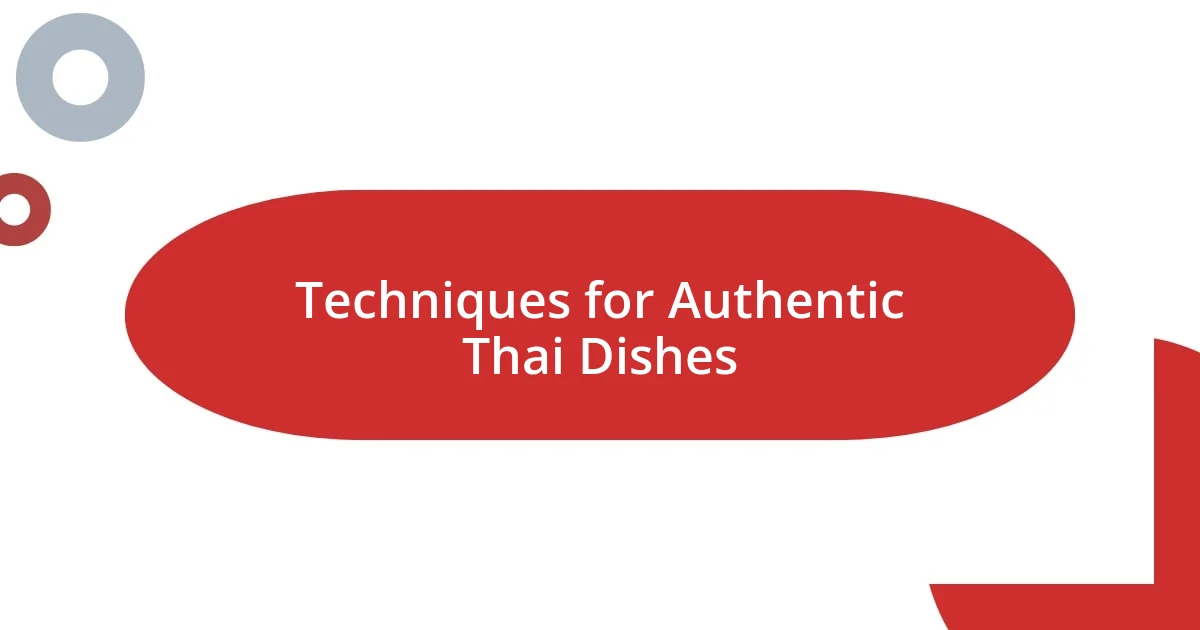
Techniques for Authentic Thai Dishes
The heart of authentic Thai cooking lies in a handful of techniques that ensure each dish captures its true essence. When I first tackled mastering the art of making curry paste from scratch, I felt like I was embracing a piece of Thailand’s culinary soul. The process of pounding fresh ingredients with a mortar and pestle is not just about technique; it’s about feeling the rhythm of the flavors melding together. Can you picture it? The friction of the pestle against the mortar, slowly releasing the oils and aromas, transports you to a bustling Thai kitchen.
Here are some techniques that are vital for creating traditional Thai dishes:
- Pounding Ingredients: Using a mortar and pestle to create curry pastes mixes ingredients thoroughly, releasing essential oils and enhancing flavors.
- Stir-Frying: The quick and high-heat method ensures ingredients remain crisp and vibrant, maintaining their individual flavors.
- Balancing Flavors: Thai cuisine is all about the harmonious balance of sweet, sour, salty, and spicy. I often find myself adjusting these elements mid-cooking to capture the ideal flavor.
- Simmering: Taking the time to let curries and soups simmer allows flavors to develop deeply, infusing the dish with complexity.
- Fermenting: Ingredients like shrimp paste develop intricate flavors through fermentation, and it was a revelation when I tried to make my own. The transformation is quite magical!
These techniques, borne from centuries of practice, help preserve the integrity of Thai dishes while allowing for personal expression. It’s incredibly rewarding to feel that connection with history when I recreate my favorite meals at home.

Traditional Cooking Methods and Tools
Traditional Thai cooking methods are steeped in rich history and culture, and they evoke a sense of connection to the past. One of my fondest memories is watching my grandmother expertly use a clay pot over a charcoal stove. The gentle heat brought out the depth of flavors, and I realized how vital this slow cooking process is to dishes like massaman curry. Doesn’t it amaze you how something as simple as the type of vessel can dramatically alter the final dish?
Among the traditional tools, the mortar and pestle stand out as essential for many Thai cooks. I recall creating my first green curry paste with this iconic tool. As my hand moved the pestle in a rhythmic motion, I felt a powerful link to generations of cooks who did the same. Each grind released aromas that made my kitchen feel like a lively street market. Have you ever experienced the satisfaction of using a traditional tool to create something delicious? There’s truly a unique joy in the tactile experience of cooking that connects us to those who came before us.
Another fascinating method is the act of steaming, particularly when making desserts like sticky rice with mango. I remember the first time I tried to make it using a bamboo steamer—watching the steam rise through the leaves created a sensory moment I’ll never forget. It’s beautiful how this gentle technique not only cooks the rice perfectly but also preserves its natural sweetness. This method reflects the mindfulness embedded in Thai cooking, reminding me that patience really can yield the most rewarding results. Don’t you think there’s something special about preparing food with care and tradition?
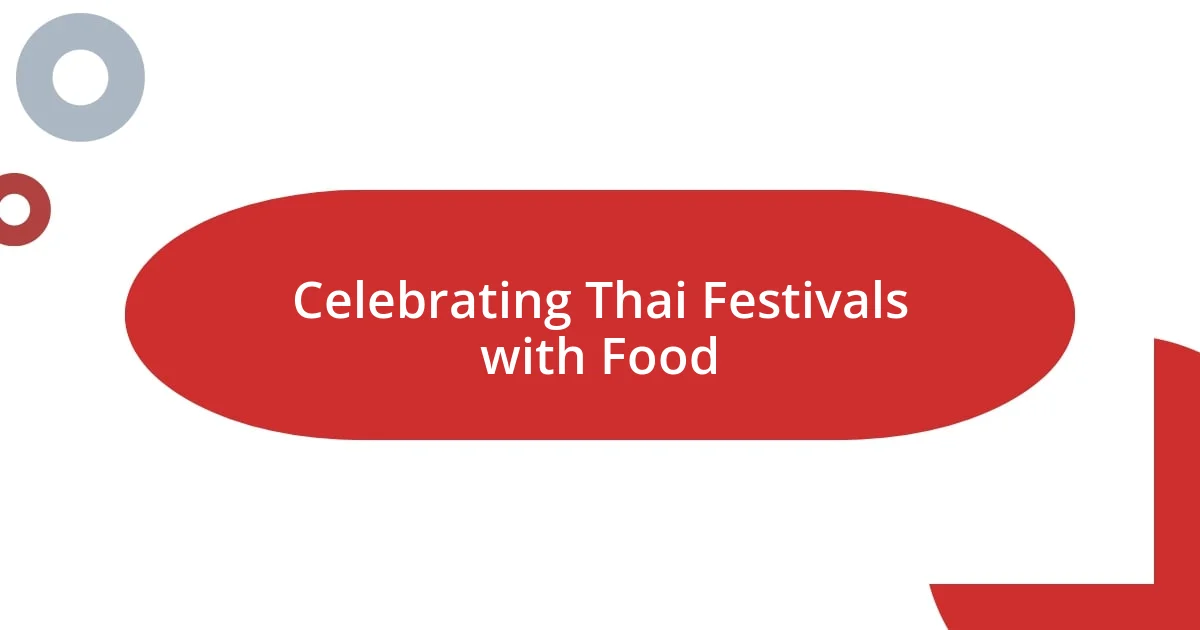
Celebrating Thai Festivals with Food
Celebrating Thai festivals with food is an experience that truly connects communities and families. I remember the vibrant atmosphere during Songkran, the Thai New Year, where the streets come alive with splashes of water and laughter. This occasion calls for delicious traditional dishes like Khao Chao, a fragrant rice pudding that binds everyone together in joyous celebratory meals. Have you ever noticed how food can elevate festivities by creating cherished memories?
During Loy Krathong, another enchanting festival, I find myself preparing floating baskets filled with beautifully arranged fruit and desserts. There’s something magical about watching these krathongs drift down the water while enjoying sticky rice and ripe mango, the flavors of the dish perfectly balancing the sweetness of the moment. Each bite reminds me of the intricate rituals we pass down through generations, making every festival not just a feast but a profound cultural experience.
In my experience, sharing food during these vibrant celebrations offers a genuine glimpse into Thai culture. Whether it’s gathering around a lavish table during festivals or savoring street food during a local fair, the shared meals create bonds that last well beyond those festive days. Food isn’t just sustenance; it’s a way of honoring traditions and fostering connections, don’t you think?










